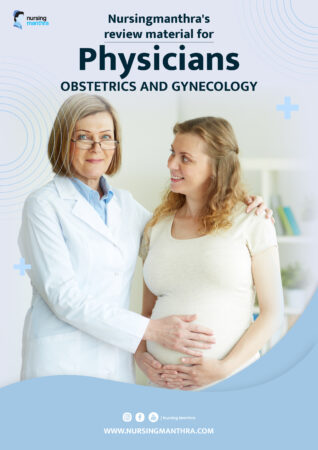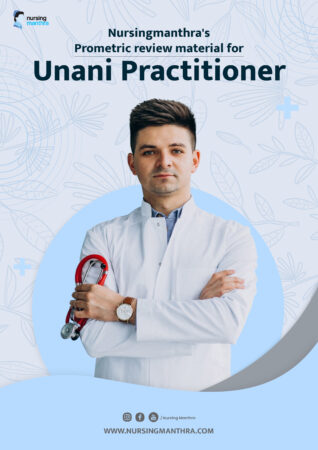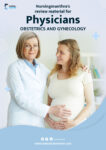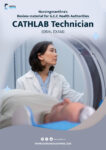- Which of the following is a key strategy for promoting health and preventing chronic diseases in older adults?
a) A diet high in saturated fats and sugars
b) Consuming adequate protein and fiber
c) Eliminating all dairy products
d) Focusing solely on vitamin supplementation
Answer: b) Consuming adequate protein and fiber
(A balanced diet that includes adequate protein, fiber, and other nutrients is essential for the health and well-being of older adults.)
2. The theory of aging that focuses on the gradual accumulation of cellular damage over time is called the:
a) Programmed aging theory
b) Wear-and-tear theory
c) Evolutionary theory
d) Mitochondrial dysfunction theory
Answer: b) Wear-and-tear theory
(The wear-and-tear theory suggests that aging occurs due to cumulative damage to cells and tissues over time, leading to impaired function.)
3. Which aging theory suggests that aging is a result of genetic programming and cellular changes over time?
a) Disposable soma theory
b) Programmed aging theory
c) Free radical theory
d) Telomere theory
Answer: b) Programmed aging theory
(Programmed aging theory posits that aging is a result of intrinsic genetic programming and is predetermined by genetic factors.)
4. Which of the following physiological changes in aging can lead to difficulty in nutrient absorption?
a) Increased insulin sensitivity
b) Decreased stomach acid secretion
c) Enhanced kidney function
d) Increased liver detoxification capacity
Answer: b) Decreased stomach acid secretion
(Decreased stomach acid secretion in older adults can lead to difficulty absorbing certain nutrients, such as vitamin B12 and minerals.)
5. A common change in the aging digestive system that can affect food intake is:
a) Increased enzyme production
b) Decreased peristalsis
c) Enhanced nutrient absorption
d) Increased appetite
Answer: b) Decreased peristalsis
(Decreased peristalsis, the wave-like muscle contractions in the intestines, can lead to constipation and decreased digestive efficiency in older adults.)
6. Which of the following best describes the relationship between nutrition and quality of life in older adults?
a) Poor nutrition has little effect on quality of life
b) Good nutrition can help improve energy levels, mental health, and physical well-being
c) Nutrition only affects physical appearance, not overall health
d) Quality of life is solely determined by socioeconomic status, not nutrition
Answer: b) Good nutrition can help improve energy levels, mental health, and physical well-being
(Adequate nutrition is essential for enhancing energy, mood, mobility, and mental function, thus improving the overall quality of life in older adults.)
7. Which of the following tools is commonly used to assess nutritional status in older adults?
a) Mini Nutritional Assessment (MNA)
b) Body Mass Index (BMI)
c) Waist-to-hip ratio
d) Caloric intake assessment
Answer: a) Mini Nutritional Assessment (MNA)
(The Mini Nutritional Assessment (MNA) is specifically designed to screen for malnutrition in older adults and assess their nutritional status.)
8. What is the primary purpose of nutrition screening in the older adult population?
a) To identify those who need immediate surgery
b) To identify individuals at risk of malnutrition or nutritional deficiencies
c) To determine the exact cause of chronic diseases
d) To assess only vitamin and mineral levels
Answer: b) To identify individuals at risk of malnutrition or nutritional deficiencies
(Nutrition screening helps identify older adults at risk of malnutrition, allowing for early intervention to prevent health complications.)
9. Which nutrient requirement tends to increase with age due to changes in absorption and metabolism?
a) Fiber
b) Vitamin D
c) Calcium
d) Both b and c
Answer: d) Both b and c
(Vitamin D and calcium requirements increase with age due to reduced absorption efficiency and to maintain bone health.)
10. Older adults are more likely to experience which of the following nutritional issues?
a) Excessive sodium intake
b) Vitamin and mineral deficiencies
c) Excessive fiber intake
d) High intake of red meat
Answer: b) Vitamin and mineral deficiencies
(Older adults are at higher risk for nutrient deficiencies due to factors like decreased appetite, reduced absorption, and chronic health conditions.)
11. Which of the following services related to nutrition are generally covered by Medicare for older adults?
a) Private dietitian consultations
b) Medical nutrition therapy for certain chronic conditions
c) Nutritional supplements
d) Over-the-counter vitamins
Answer: b) Medical nutrition therapy for certain chronic conditions
(Medicare covers medical nutrition therapy for conditions like diabetes and kidney disease but typically does not cover over-the-counter supplements.)
12. What is the role of nutrition support services in geriatric care?
a) To provide meal delivery services
b) To manage the administration of intravenous medications
c) To assess and manage the nutritional needs of older adults, including enteral and parenteral nutrition
d) To advise on cosmetic nutrition
Answer: c) To assess and manage the nutritional needs of older adults, including enteral and parenteral nutrition
(Nutrition support services are essential for assessing and managing the nutritional needs of older adults, including through enteral or parenteral feeding when necessary.)
13. Which of the following is an important factor to consider in the nutritional care of older adults in residential facilities?
a) Unlimited access to food without monitoring intake
b) Ensuring culturally appropriate meals are provided
c) Reducing food variety to simplify meal planning
d) Discouraging regular physical activity
Answer: b) Ensuring culturally appropriate meals are provided
(Providing culturally appropriate meals is essential for meeting the dietary preferences and improving the quality of life of older adults in residential settings.)
14. Which of the following is a key consideration when addressing nutrition needs in the older adult population?
a) Decreased appetite and reduced caloric intake
b) Increased protein synthesis
c) Enhanced ability to metabolize fats
d) Absence of chronic diseases
Answer: a) Decreased appetite and reduced caloric intake
(As adults age, they often experience a reduced appetite and energy intake, which makes it important to ensure nutrient-dense foods are included in their diet.)
15. Which of the following is NOT commonly associated with aging?
a) Decreased basal metabolic rate
b) Increased skin elasticity
c) Reduced muscle mass
d) Slower immune response
Answer: b) Increased skin elasticity
(With aging, skin elasticity decreases, not increases, due to changes in collagen and elastin fibers.)
If you would like access to more questions for the Clinical Dietician Prometric Exam, you can purchase the complete study material using the link provided below. For any assistance or to request the material, please contact NursingManthra via WhatsApp.” +971502515717





















